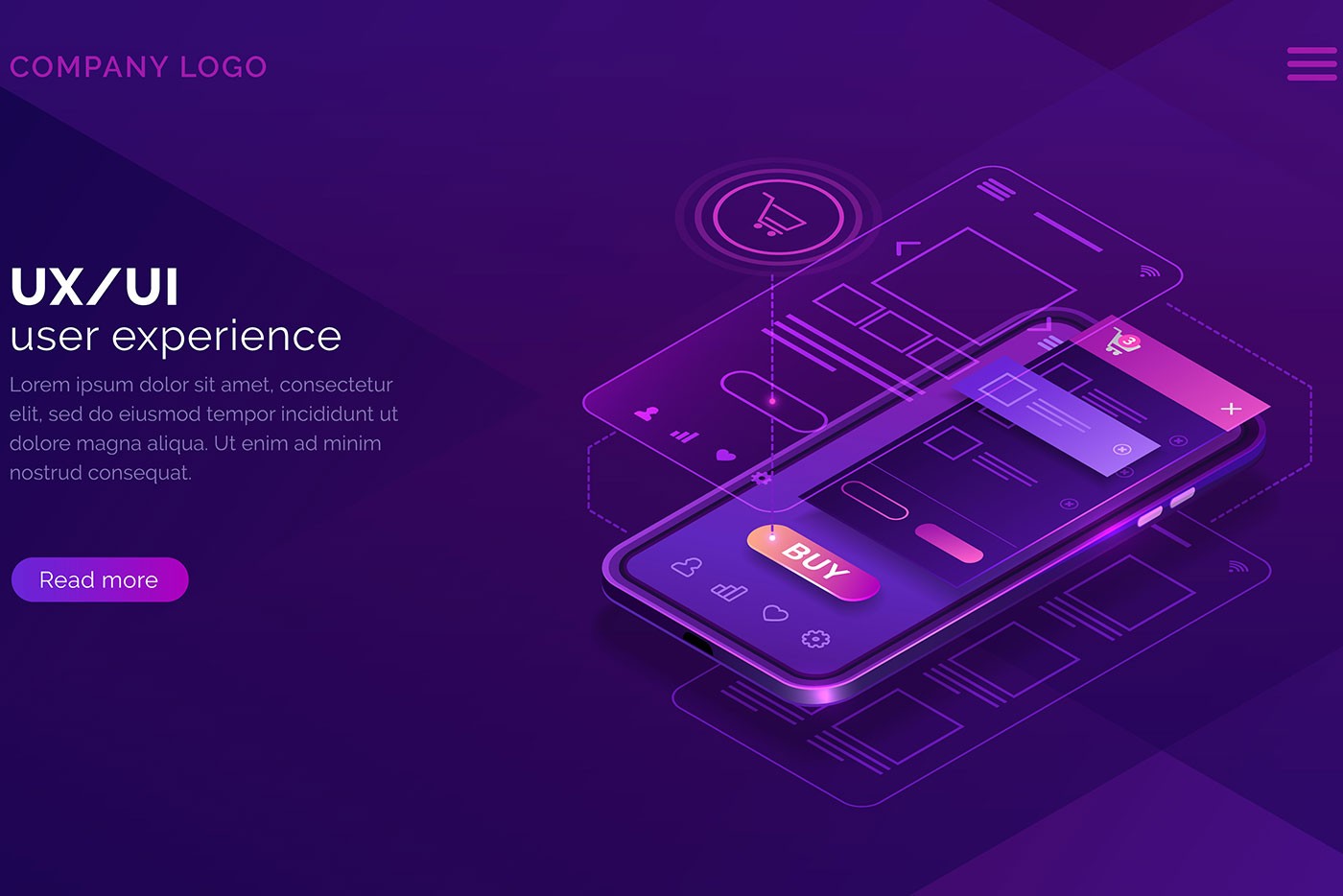User experience, or UX, is a very important component of asset design and functional development. The user interface, or UI, is most important in the customer interaction with the company and its assets or products but is often confused with user experience.
While equally important in customer engagement and the overall goals of the assets, these two terms are related to different aspects of the very important tools used by businesses, consumers, government agencies, schools, and other organizations and individuals each day. The following paragraphs define UX and UI, and explain their similarities and their distinct differences.
What does UX mean?
User experience, or UX, is an approach to design where the user’s interaction with the company, its assets, and its products, whether digital or offline, are evaluated as a whole. The term “UX” is often used in reference to websites and apps, but it also encompasses offline experiences. User Experience designers conduct research in who the users are of a product, or the target audience, and the customer persona of this audience. They then begin their work on how to create a positive experience with the company’s assets or products for these users.
User Experience designers look at the user journey in tasks like solving a problem, searching and locating information, completing a form, using an online tool, or making a purchase. They look at the steps required for specific actions and the potential hurdles encountered in the process. UX involves understanding the customer and how that person finds information and interacts with a company’s assets.
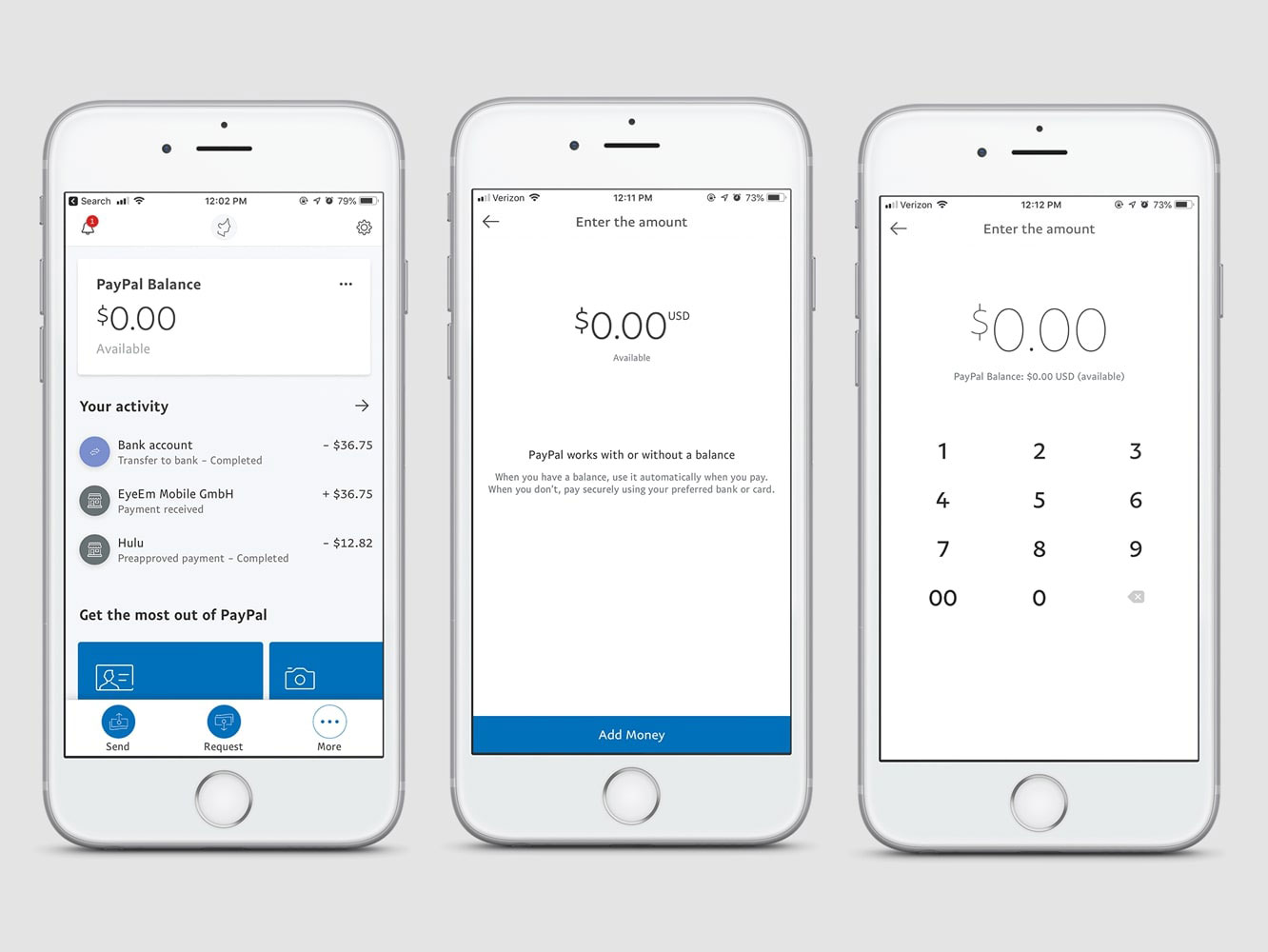
Paypal user experience(tronebrandenergy.com)
User Experience designers consider how the experience with the company or organization makes the end-user feel and if the desired goals are easy for the end-user to complete. A company or organization wants users to easily complete desired goals, or key performance indicators (KPIs). User Experience designers want users to have a positive experience and make it easy to meet those goals and KPIs. UX involves cognitive science and psychology, and the definition of poor user experience is for the user to come away from the interaction feeling confused or frustrated.
The User Experience designer looks at why customers will use a product or asset, what they will use the product for, and how they will use that product. Using a website as an example, the User Experience designer will look at the customer persona and identify the motivations for the target user to use the website. This is the “why.”
They then will identify the tasks the target customer will complete during their online activity. This is the “what.” The how is the functionality needed on the website to complete these tasks. By keeping these key thoughts in mind and the strategic layout of the website, the User Experience designer will develop the structure that is meaningful for the online user and target audience.
Did you know? Every $1 invested in UX/UI yielded returns of at least $100. (uxcam.com)
id=”chapter2″Responsibilities of a User Experience designer
Understanding the role of a User Experience designer can better define the meaning of UX. The foundational elements of brand, functionality, usability, design, and the manner in which the target customer will relate to these elements along the customer journey converge. A User Experience designer works on the overall strategy, execution, and ongoing optimization of the assets. They work on customer identification and analysis to identify opportunities to better connect with the customer.
They also look at competitive analysis to identify gaps between their company and the competition, which reveals opportunities to sweep in and overtake the competition to meet the customers’ needs where they currently are not being addressed. User Experience designers outline the asset structure as well as the content to communicate the information. They outline wireframes for assets and plan the development. They also conduct testing to further optimize and look for ways to continuously improve and develop better technology.

(Yelp search, tronebrandenergy.com)
A User Experience designer first identifies the target customer through a customer persona. They then look at the user journey and the steps necessary to search for information or solve a problem. The User Experience designer will audit the current assets to determine if there are barriers to the goal or KPI completion and engagement. They then identify ways to break down these barriers and create a better flow and ease of use for the target audience.
Content and messaging are also an integral part of the evaluation. Online content needs to be categorized logically with an understandable taxonomy in a way that the target audience thinks and searches for information so that users can easily find information, navigate the website or app with ease, and experience expected results while using the website.
You Might Also Like
Test your site’s SEO and performance in 60 seconds!
Good website design is critical to visitor engagement and conversions, but a slow website or performance errors can make even the best designed website underperform. Diib is one of the best website performance and SEO monitoring tools in the world. Diib uses the power of big data to help you quickly and easily increase your traffic and rankings. As seen in Entrepreneur!
- Easy-to-use automated SEO tool
- Keyword and backlink monitoring + ideas
- Ensures speed, security, + Core Vitals tracking
- Intelligently suggests ideas to improve SEO
- Over 500,000 global members
- Built-in benchmarking and competitor analysis
Used by over 500k companies and organizations:
Syncs with 
Once the foundational elements of the project are outlined, the User Experience designer works with the User Interface designer to make sure the project is brought to life in a way that evokes a positive user experience and feeling. The User Experience designer will also look at analytics to monitor the use and identify opportunities for optimization.
User Experience designers must be strategic and good problem solvers. They must foresee many hypothetical situations and possess empathy in how customers may behave and react. They must anticipate the unknown and predict the future actions of customers, yet be open to testing and using analytics and data to optimize the user experience.
While they may think they know how the target audience will use assets, the data will reveal the reality of how these assets are being used. The User Experience designer must be open-minded to pivoting, adjusting, and making changes to address the needs of the user to provide the optimal user experience and increase engagement and goal completion.
Did you know? 88% of website visitors do not return if they have a negative user experience. (uxcam.com)

(Crowded drop down menu, marion.com)
Another example of bad UX design could be the facebook sidebar menu. Facebook is all about connecting with others, yet the friends list all the way at the bottom.
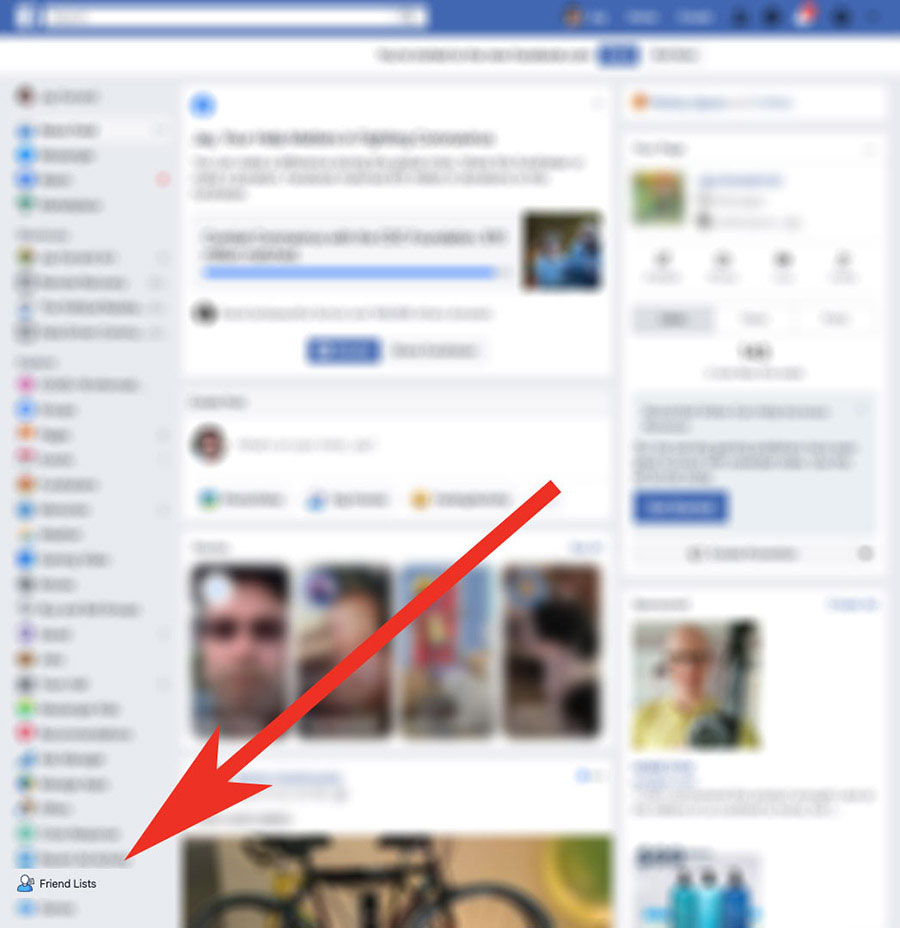
(marion.com)
What Does UI Mean?
The user interface, or UI, refers to the look and functionality of the assets used by the company or organization. Unlike user experience that refers to digital and traditional offline assets, user interface deals with only digital assets, such as websites, apps, video games, and digital tools and resources. User Interface designers are concerned with the look and functionality of the website and app and evaluate the icons, type font, colors, and images used on digital assets.
Their goal is to make sure users intuitively understand how to use digital assets without having to spend time figuring it out. When users feel confused, do not know where to look for information or do not experience what they thought should be happening, they turn to other resources and often do not return.
User Interface designers also ensure the digital assets are easy to use by those on mobile devices as well as desktops, making sure responsive and mobile design is used. They look at multiple browsers and screen sizes to ensure users across all devices and technologies have a positive experience and can use the assets in the manner designed and intended. These are the people who ensure the view of a website and its functionality on a mobile device works just as seamlessly as it does on a desktop.
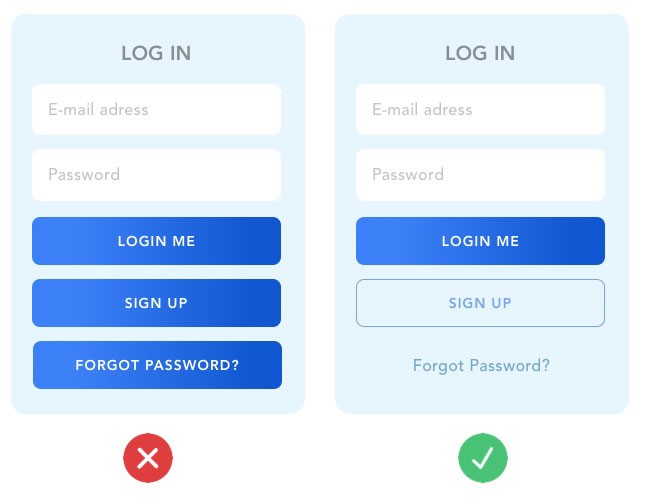
(Good vs.bad UI design, careerfoundry.com)
Responsibilities of a User Interface Designer
The User Interface designer is tasked with bringing a great user experience to life. These positions are held by people who are creative and visual. The User Interface designer looks at company branding to ensure it is followed in terms of type font, colors, content language, tone, and overall look and feel when designing assets.
User Interface designers analyze the customer persona and create user guides and storyboards that talk to the customer in the most appropriate and meaningful manner. They create prototypes to ensure the experience on mobile devices and all screen sizes are seamless just as it is on a desktop. Furthermore, they work with animation and interactive elements like calculators, forms, and online tools.
Some User Interface designers work with developers and website designers to implement the code for digital assets while others also possess these skills. In fact, it is common that web designers are also user interface experts. Conversely, User Experience designers typically do not code or implement website development.
User Experience designers are typically centered around strategic thinking and developing a plan that addresses the target audience while searching for ways to increase goal conversion and KPI engagement.
Working as a User Interface designer requires not only an understanding of good user experience and the elements that achieve that goal but also a strong skill set in creative and visual design. They must be able to put beautiful works of art together, yet ensure these masterpieces come together in a way that supports the positive user experience. If the User Experience designer is the story developer, the User Interface designer is the storyteller through illustration.
What Does UX/UI Stand For?
Once the digital asset is outlined with a strong foundation, a User Interface designer will create the assets necessary to bring it to life. They work on everything that encompasses the user journey such as page visualization, page scroll interaction, button functionality, and form behavior. A User Interface designer considers how colors, type font, button size, and other elements of the design affect readability, usability, goal completion, and KPI engagement.
To summarize the UI/UX definition in very broad terms, user experience design considers the combination of tasks that converge to create the feeling users experience when interacting with a product, business, or organization. User interface deals with the elements that make up the look and feel of digital assets and ultimately create the experience users have when interacting with these assets.
To use an analogy, when eating dinner out at a restaurant, user experience refers to the meal’s ingredients, the music, the company, and the location of the table while the user interface refers to the feeling the diner has while eating that meal. Neither can be experienced independently of each other, and both rely on each other.
The Key Differences Between UI/UX
Fully understanding what UI/UX stands for involves knowing the similarities and differences between the two terms. User experience and user interface work together and it is impossible to have one without the other. However, there are key differences between user experience and user interface.
- User Experience is a feeling or emotion derived from the experience of interacting with the company’s assets while User Interface is the combination of the elements that make up the digital assets and their look and function.
- User Experience deals with identifying and solving the problems encountered by users when engaging with digital assets. User Interface addresses the components of the asset creation that users will interact with while solving these problems.
- User Experience design must be completed before the User Interface design can begin. The User Interface designer will use the information created by the User Experience designer to create an effective interface for customers. The User Experience designer completes the necessary research, creates the user journey outline, and defines requirements for positive user experience while the
- User Interface designer brings the outline and requirements to life with online, interactive assets with meaningful technology, usability, and functionality.
- User Experience addresses all products and services of an organization or company while User Interface addresses only the digital assets of the company.
How Do UX and UI Work Together?
User Experience and User Interface work with each other to deliver an optimal user experience that meets the digital goals of KPI engagement and goal conversion. A website can be beautifully designed, but it may lack a good user experience, leaving users feeling frustrated and confused and unwilling to return to the website in the future.
Some examples of poor user experience include colors or type fonts that are difficult to read, buttons that are so close together that it is difficult to click on the desired button, or a form that does not render a thank you page or confirmation.
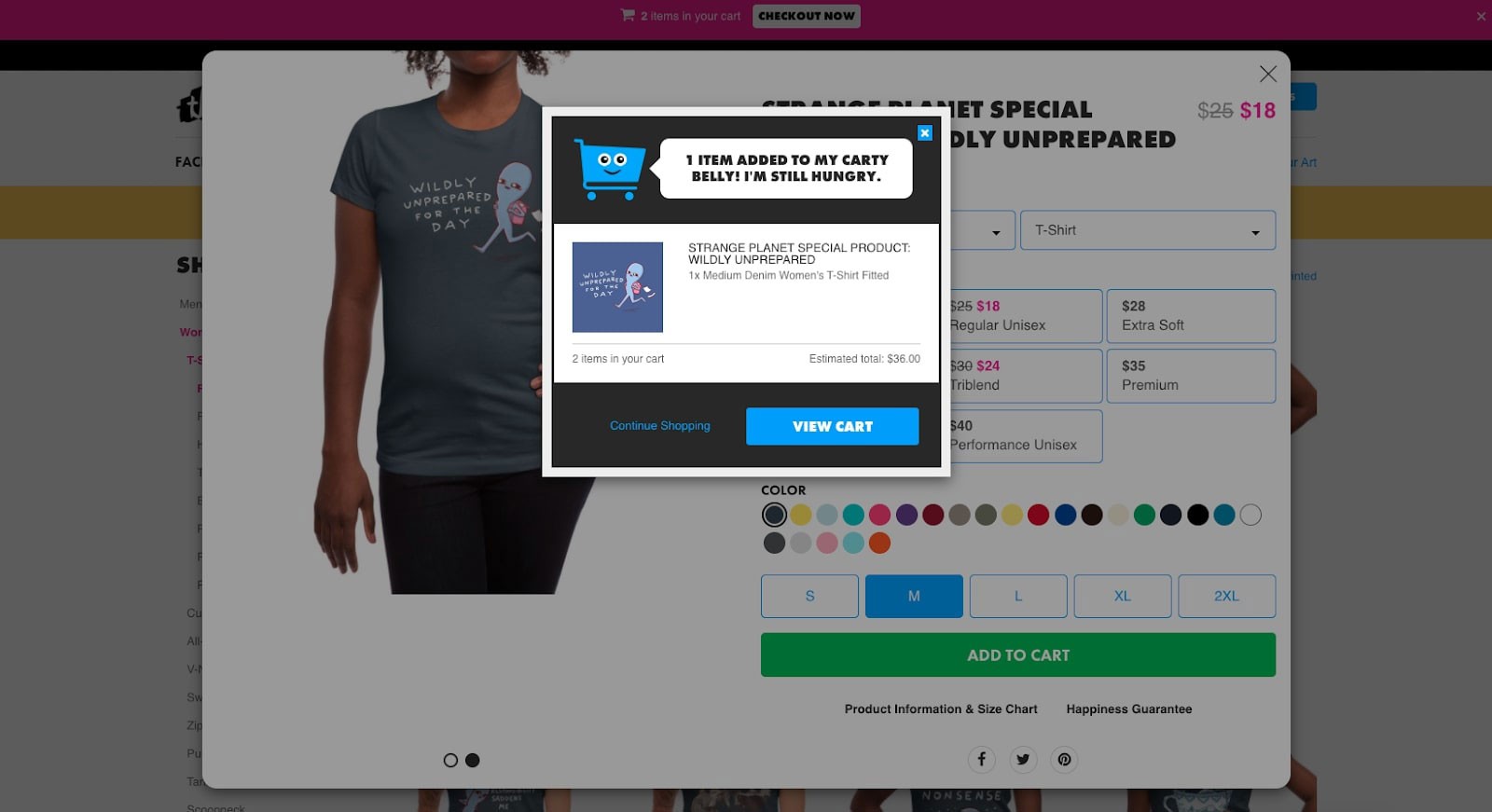
(Example of a confirmation pop-up, careerfoundry.com)
Conversely, a website can be optimally designed for navigation and function, but also lack style that makes a user want to engage with the website. Or perhaps the color, content, and imagery do not support the company’s image, and therefore, misses the mark on supporting the company’s brand image.
Perhaps the company’s colors are muted shades and the digital assets use bright colors. There may be instances of a company with a customer base that is heavily comprised of one gender over another or a specific age group, yet the language and imagery are not relatable for the audience. This is particularly frustrating for older adults when digital assets are designed with a teen or young adult audience in mind or vice versa. The audience needs to be able to relate to the digital assets or they may believe the company or its product is not intended for them.
To define UX and UI means understanding the intertwined relationship between the two functions. Of course, it is possible to fall short on both design and function that support UI/UX. In this case, not only is the user experience poor, but the design is not aesthetically pleasing or enjoyable to view.
A Career in UX/UI
Those interested in a career as User Experience designer or User Interface designer may find that job descriptions have a lot of overlap, yet the compensation for both positions is similar. This is partly due to both fields being somewhat new as website technology has evolved in recent years. This has many people confused on who does what outside of those who actually work in these positions. In many cases, hiring managers and recruiters believe these functions are completed by the same people.
In some cases, companies purposely seek those who have an understanding of both User Experience and User Interface skills and are able to cross over in responsibilities to handle all of these tasks; however, this is more easily said than done as the two positions involve very different skill sets and knowledge. The User Interface designer is a more creative role while the User Experience designer is a more strategic role.
We hope that you found this article useful.
If you want to know more interesting about your site health, get personal recommendations and alerts, scan your website by Diib. It only takes 60 seconds.
Understanding the differences between User Experience and User Interface can be confusing with so much overlap between the two roles. The key to fully grasping
These concepts are to remember that a User Experience designer creates the foundational framework of why, what, and how the target customer will use an asset and the User Interface designer puts that foundational planning into motion through the creative development of assets.
Diib®: Giving You Core Insights Today!
Affiliate marketing sites have created channels through which many marketers have taken control of their income. This is achieved by mainly focusing on performance-based revenue generation. Success in this form of marketing, however, relies on the level of skill and effort needed to deliver positive results.
If you are thinking about starting your own blog to promote products, Diib, offers a variety of core services that will improve your rankings and increase domain authority.
- High-quality backlinks
- SEO optimized content
- Backlink cleanup and analysis
- A comprehensive dashboard with website and social stats.
Call 800-303-3510 to get in contact with one of our highly skilled growth experts to schedule a consultation, and let us get you on the track to success. Or click here for our free 60 second site scan today!
FAQ’s
UX is the overall experience from the user’s perspective, and how they interact with a product or service.
UI is the most on the web design spectrum, and includes colors and copy fonts.
Yes, both work in tandem with each other, and complement each other to create the desired experience on a particular webpage.
UX designers need to know some level of coding, as it is beneficial to understand how the different aspects of the site react with each other.
HTML, CSS, and Javascript
UX research
wireframing
UX writing
coding
user empathy
